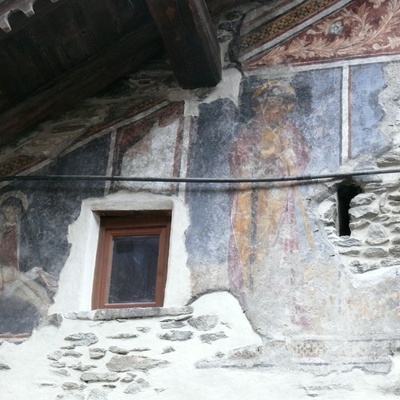
Via Roma 88, 10050 Salbertrand
The Hotel Dieu or Maison Dieu of Salbertrand is an ancient shelter for pilgrims located in Salbertrand, along what was the ancient "Monginevre road", then "Roman road of Gaul", finally (with the passage of the Upper Dora Valley to the Dauphiné - 12th century) "Road of France", one of the most important transalpine routes in medieval Europe, and as such traveled by carriages, horses and knights, notables, religious people, merchants, romei headed for pilgrimages. Built in the 15th century, like many others along the road to France, with the aim of refreshing travelers with a hot dish and a bed for the night and, if sick, with a period of hospitalization.
A fine example of Alpine architecture, the façade features traces of sixteenth-century frescoes brought to light during the 2016 restorations: a pieta and the depiction of Saint James, iconographically characterized by a wide-brimmed hat on which the shell emblem of the pilgrimage towards the mountains is visible. The Atlantic Ocean, which leads us back to the ancient path of faith that led east towards Rome and Jerusalem and west towards Santiago de Compostela.
Since the end of the nineteenth century, the Dieu hotel and the stone fountain in front dating back to 1524 were the subject of study and protection by the architect Alfredo D'Andrade, director of the Regional Office for the Conservation of the Monuments of Piedmont and Liguria , and in 1914 they were included in the list of "Buildings of important monumental interest".
Purchased in 2011 by the Gran Bosco di Salbertrand Park Authority (managing body of the Colombano Romean Ecomuseum), the building adds an important piece to the ecomuseum project, guaranteeing further space for development. The objective is to transform it into a museum house of typical mountain architecture, an information point in the heart of the town of Salbertrand, to create new spaces for ecomuseum installations and restore its ancient function by transforming it, in the future, into a stopping place : welcoming place for modern travelers and pilgrims along the itineraries increasingly frequented by lovers of "slow" and sustainable tourism of the Via Francigena and the Glorious Repatriation of the Waldensians.








